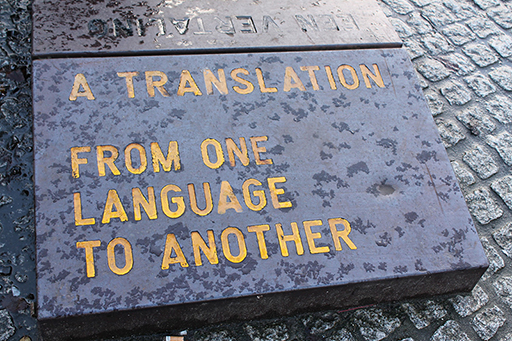4.1 Translating language
Translation is both a tool which can aid people learning a new language (by using their first language as a reference point), and a valuable subject-specific skill developed over time.
An activity earlier in Week 3, involving the French words for colours, introduced translation as a language-learning approach for remembering equivalent words in two languages. Remember the recommended strategies for vocabulary flash cards with the English and French on each side. In a beginners’ French course, you can expect to complete activities which involve translating short phrases or sentences from and into French, to help you learn and memorise them. Try the activity below for an example, and to recap some earlier learning.
Activity 4 Vocabulary test
Can you remember some of the words you learnt in the first few weeks of this course? Translate the phrases below into English (or into your own language) to check your memory. See what you can recall before revealing the answers.
- Le vélo bleu.
- La chaussette noire.
- La maison rouge.
- L’arbre vert.
Discussion
Here are the translations in English:
- The blue bike.
- The black sock.
- The red house.
- The green tree.
Now, see if you can translate the following into French.
- The green apple.
- The yellow table.
- The black dog.
- The red book.
Discussion
Here are the translations in French:
- La pomme verte.
- La table jaune.
- Le chien noir.
- Le livre rouge.
For all phrases, check that you used:
- the correct vocabulary
- the correct article, i.e. le for masculine words and la for feminine words
- the correct form of the colour adjective.
For example, in translating the first phrase, check that you remembered to use the feminine article la, and the feminine form of the adjective vert, which is verte.
As you progress further in your studies, you will learn more complex structures and engage with more authentic content, and you will soon come to realise that translation is more than a learning tool – it’s a sophisticated skill in its own right.
One important aspect of translation is that languages do not match up perfectly. French can’t be translated word-for-word into English, or any other language. The ultimate goal is to translate meaning, not just words. There are often contexts where a good translation involves using different words or phrases to produce the equivalent meaning in the target language. Try the next activity to explore this idea.
Activity 5 Retaining meaning in translation (1)
Have a look at the following sentences. What do you notice about the differences between the word-for-word English translations, and those which more accurately convey the meaning? Make some notes about your observations, then read the discussion.
French sentence: J’ai 40 ans
Word-for-word English translation: ‘I have 40 years’
Accurate English translation: ‘I am 40’
Discussion
The word-for-word translation shows you that in French, the verb equivalent ‘to have’ is used to give one’s age, whereas in English the verb ‘to be’ is used (with forms like: I am, you are, she is, and so on). A second difference is that the number is followed by the word for ‘years’ (ans) in French, whereas in English you don’t need to use it. If you did choose to use it in English, you would need to add ‘old’, as in ‘I am 40 years old’.
So, as you can see, different languages use different structures to express the same meaning, and translation can be very useful in highlighting these variations between languages. Here is another typical example, but this time it’s an idiom – a culturally-specific phrase where the meaning is not literal but relies on the use of imagery.
French sentence: Il pleut des cordes
Word-for-word English translation: ‘It rains (some) ropes’
Accurate English translation: ‘It’s raining cats and dogs’
The nouns here – the French cordes and the English cats and dogs – do not refer to actual ropes or animals, of course. This example shows you that idioms are language-specific, and need to be translated by equivalent idioms. A word-for-word translation would be completely meaningless.
Another good example of this is how French and English refer to something being very unlikely. In English, people will talk about ‘when pigs fly’, while in France, people will say quand les poules auront des dents. Translated literally, this refers to ‘when hens have teeth’.
Idioms can be great fun to learn. If you’re interested, you could look up more French ones: try finding the meaning of être dans la lune, or avoir du bol.
Idioms are a good insight into how culture is intricately linked to language. As a result, while translation skills will certainly involve a strong structural understanding of the language, good cultural knowledge is required too. As a learner of French, you will become more and more adept at recognising cultural references and converting the underlying meaning. You will reflect on this further in the next section.

